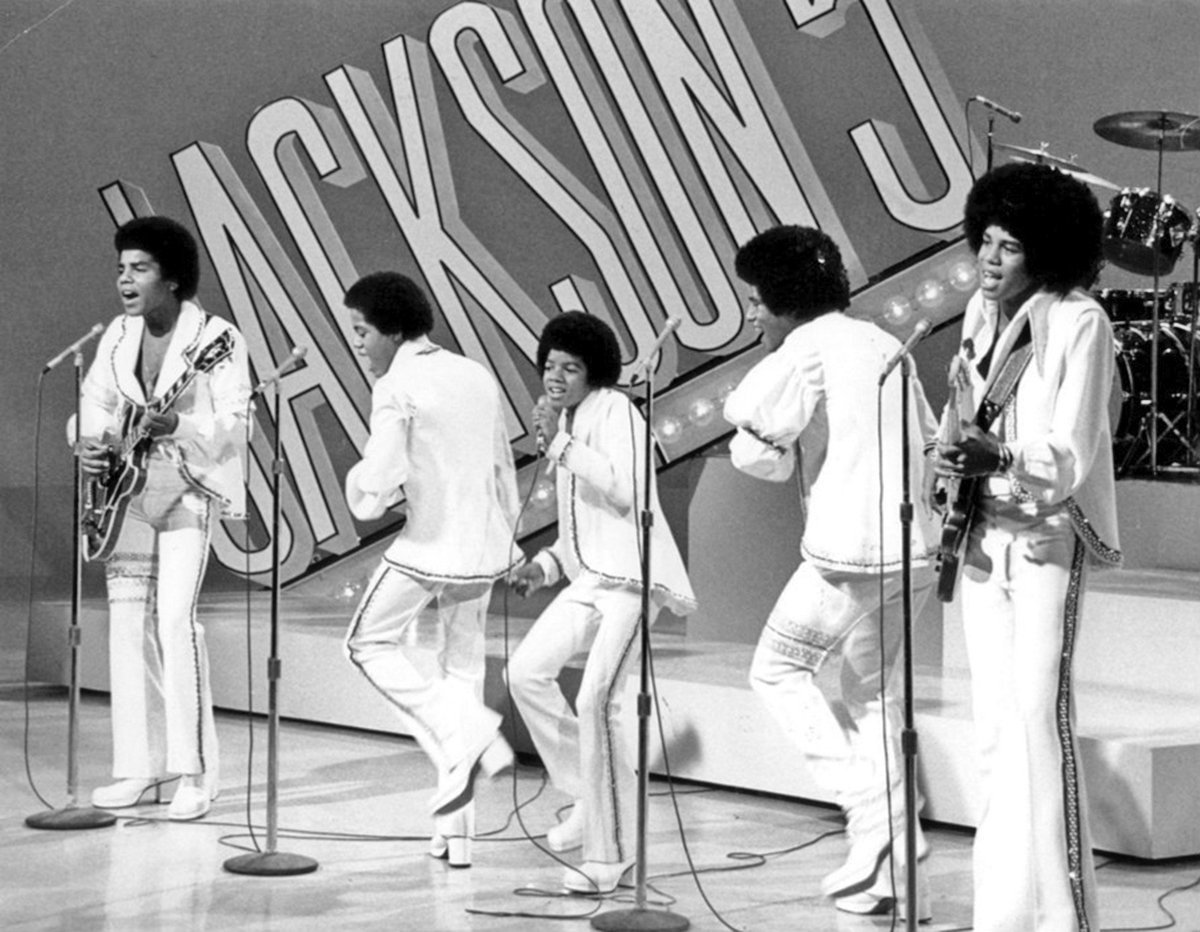
They were neighbors who grew up in inner city projects; friends who attended the same school; brothers and sisters who were raised in the same household. No matter how or where they met, the end result for the best rhythm and blues groups was the same—they made history.
The Supremes were raised poor in Detroit, Mich. Boyz II Men met at a Philadelphia high school. The Jackson Five were siblings in a large family from Gary, Ind. The gifts and talents of these and many other groups left an indelible mark on music and society.
As we observe Black Music Month, we take a look at 12 soul and R&B groups that proved to be shining stars.
The Temptations
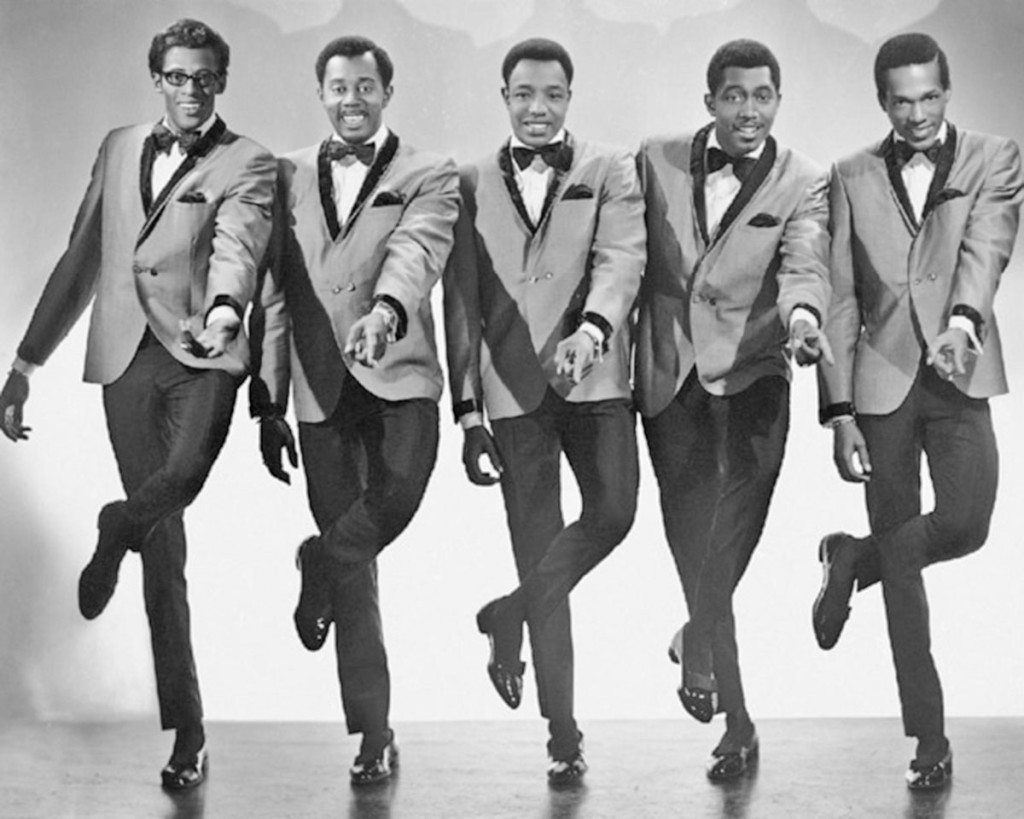
The classic lineup was one of the greatest quintets in music history: Otis Williams, Melvin Franklin, Paul Williams, Eddie Kendricks, and David Ruffin. Their talents—honed by the savvy stewardship of Motown founder Berry Gordy and some of the industry’s most prolific writers, producers, and choreographers—combined to create pure magic. The Temptations blended superb music and smooth-stepping, flawless presentations to reach the top of the charts with a timeless style and sound. Tunes like “My Girl,” “It’s Growing,” “Since I Lost My Baby,” “Get Ready,” “Ain’t Too Proud to Beg,” “Beauty Is Only Skin Deep;” “I Wish It Would Rain,” and so many more all set the standard by which R&B music groups will be forever judged.
Earth Wind and Fire
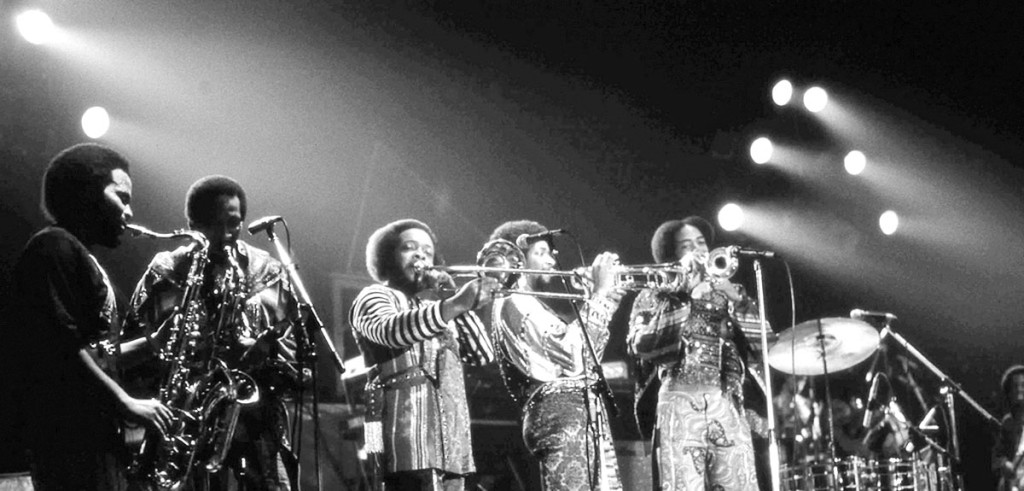
The elements of the universe touched a broad range of musical genres—R&B, soul, funk, jazz, disco, pop, rock, Latin, African—and along the way sold more than 100 million records to become one of the greatest selling groups of all time. Founded in 1971 by legendary singer, songwriter, and musician Maurice White, who died earlier this year, Earth Wind and Fire was known for its dynamic horn section and energetic, elaborate stage shows. In the 1970s and early 1980s, the group scored several hits, including “Shining Star,” “That’s the Way of the World.” “Devotion,” “Reasons,” “September,” “Boogie Wonderland,” and “After the Love Has Gone.” Earth Wind and Fire has six Grammy Awards (White and singer Philip Bailey won separate individual awards) and four American Music Awards; and two of their songs have been inducted into the Grammy Hall of Fame: “That’s the Way of the World” (2004) and “Shining Star” (2007).
The Isley Brothers
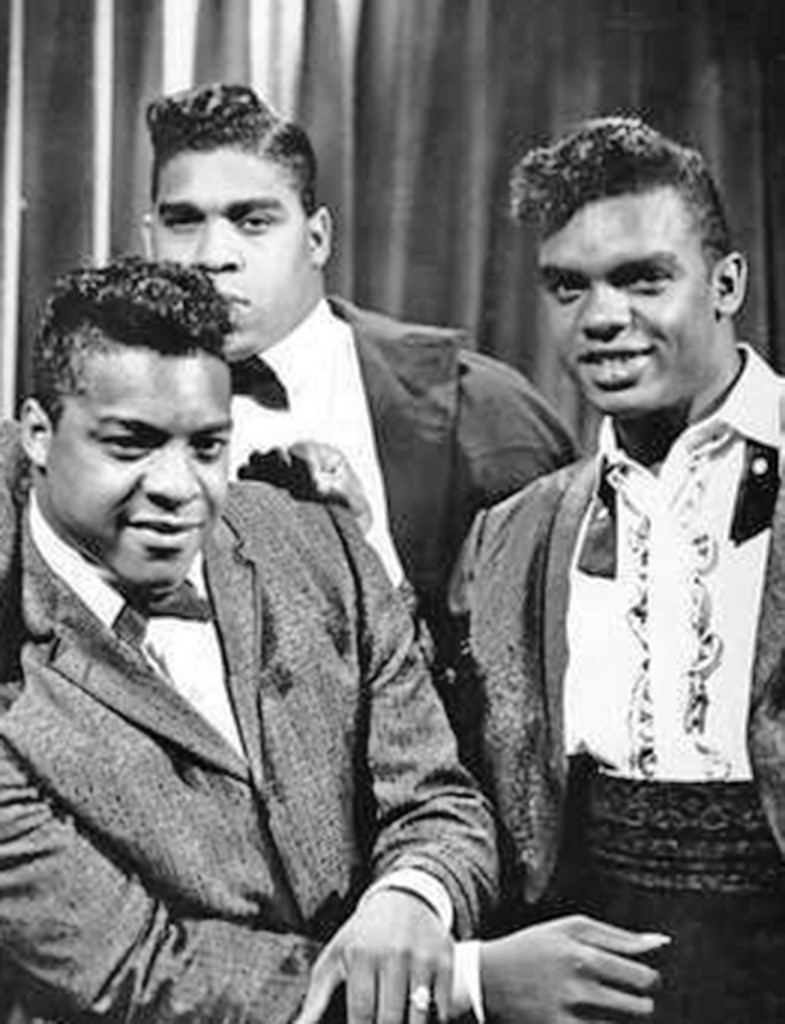
Throughout the 1960s, the Isleys were on a variety of labels, including Motown’s Tamla subsidiary for which they recorded the melodic soul classic “This Old Heart of Mine,” written and produced by the famed Motown production team of Holland-Dozier-Holland. In the late 60s, the group added three younger family members: brothers Ernie and Marvin Isley and cousin Chris Jasper. The new arrangement immediately yielded the biggest hit of the group’s career, “It’s Your Thing,” and began a period when they dominated black-music and placed 50 singles on the R&B charts. Between 1969 and 1988, the Isleys turned out hits like “Summer Breeze,” “Love the One You’re With,” “Fight the Power,” “The Pride,” “Take Me to the Next Phase,” and “I Wanna Be With You.” A bit of trivia: A prepsychedelic Jimi Hendrix played guitar for the Isley Brothers in 1964, and his style can be heard in the playing of Ernie Isley.
The Jackson Five/The Jacksons
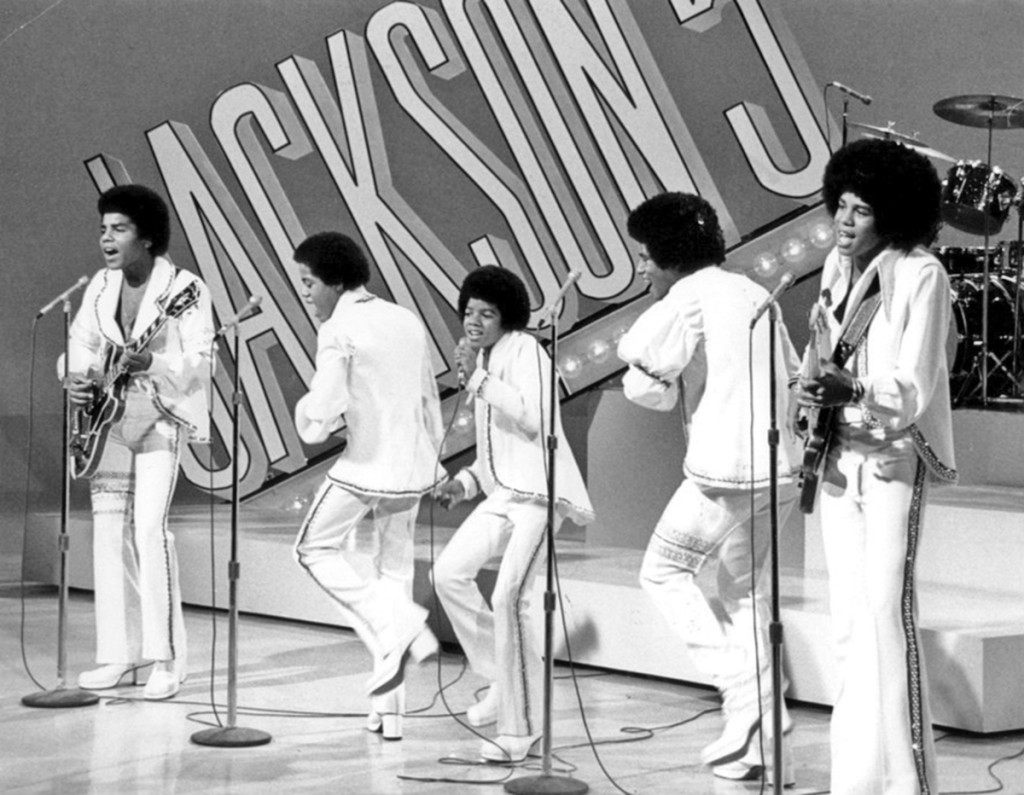
Led by the incandescent preteen Michael Jackson, the Jackson Five was “the last of the big stars to come rolling off [the] assembly line,” according to Motown founder Berry Gordy. The group made music-business history when their first four Motown singles shot to number one in 1970. Released over a nine-month period, that string of 45s—“I Want You Back,” “ABC,” “The Love You Save,” and “I’ll Be There”—swept the country. The group was special from the start: In January 1970, their first production, “I Want You Back,” reached number one, and its follow-up, “ABC,” unseated the Beatles’ “Let It Be” from the top position. As the Jacksons the group entered another successful phase in their career with a trio of contemporary dance-oriented R&B albums: Destiny (1978), Triumph (1980), and Victory (1984). The sad final gathering of all the Jackson siblings took place in July 2009, when Michael’s five brothers served as pallbearers at his funeral.
Sly and the Family Stone
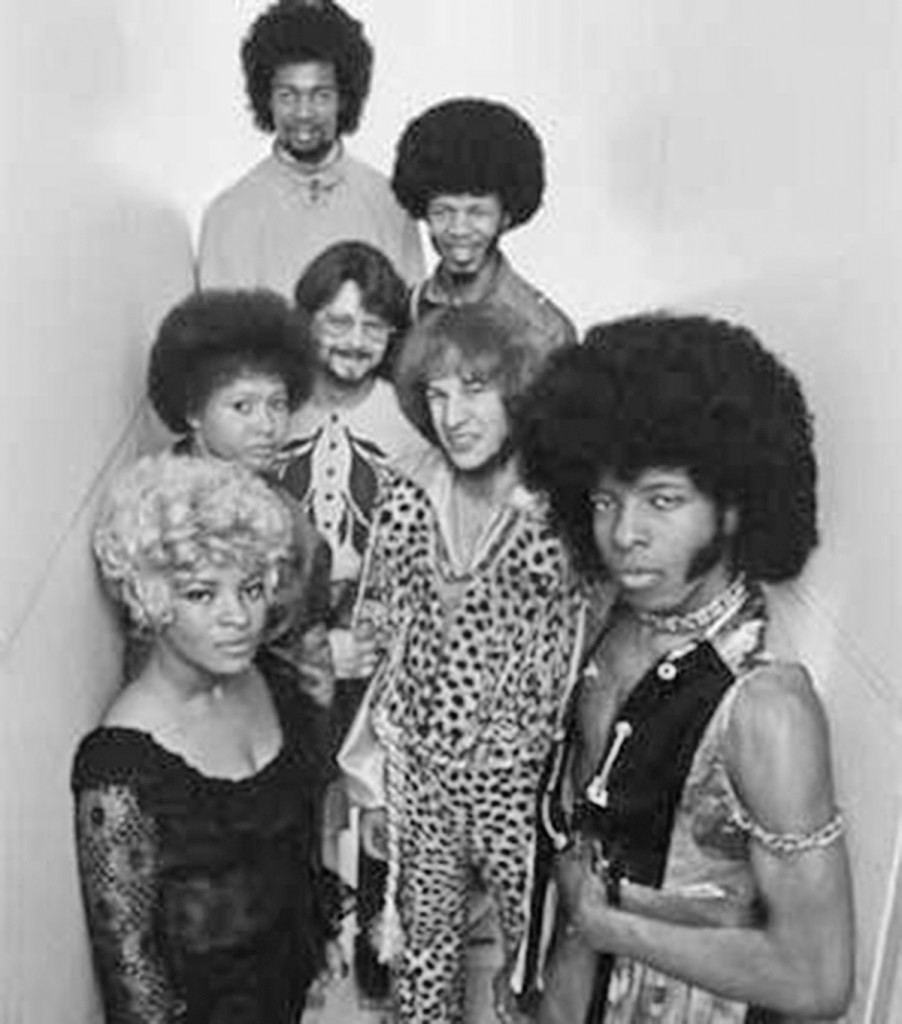
Before Sly and the Family Stone, very few soul and R&B groups delved into political and social commentary. But this groundbreaking group was notable for something else rarely seen in the 1960s: diversity. The band was comprised of men and women, blacks and whites, making it one of the most prominent fully integrated groups in rock’s history. That integration shone through the group’s music and message. Its breakthrough success in 1969 with the album “Stand!”—featuring the title track, as well as “Everyday People,” “Sing a Simple Song,” and “I Want to Take You Higher”—became the Family Stone’s first genuine hit, climbing to number 13 and spending more than 100 weeks on the charts. “Stand!” also marked the emergence of the political bent in Stone’s songwriting with “Don’t Call Me Nigger, Whitey.” Over time, however, Sly (born Sylvester Stewart) was beginning to unravel behind the scenes. Developing a debilitating addiction to narcotics, Stone soon became notorious for arriving to concerts late and frequently missing shows all together.
The Four Tops
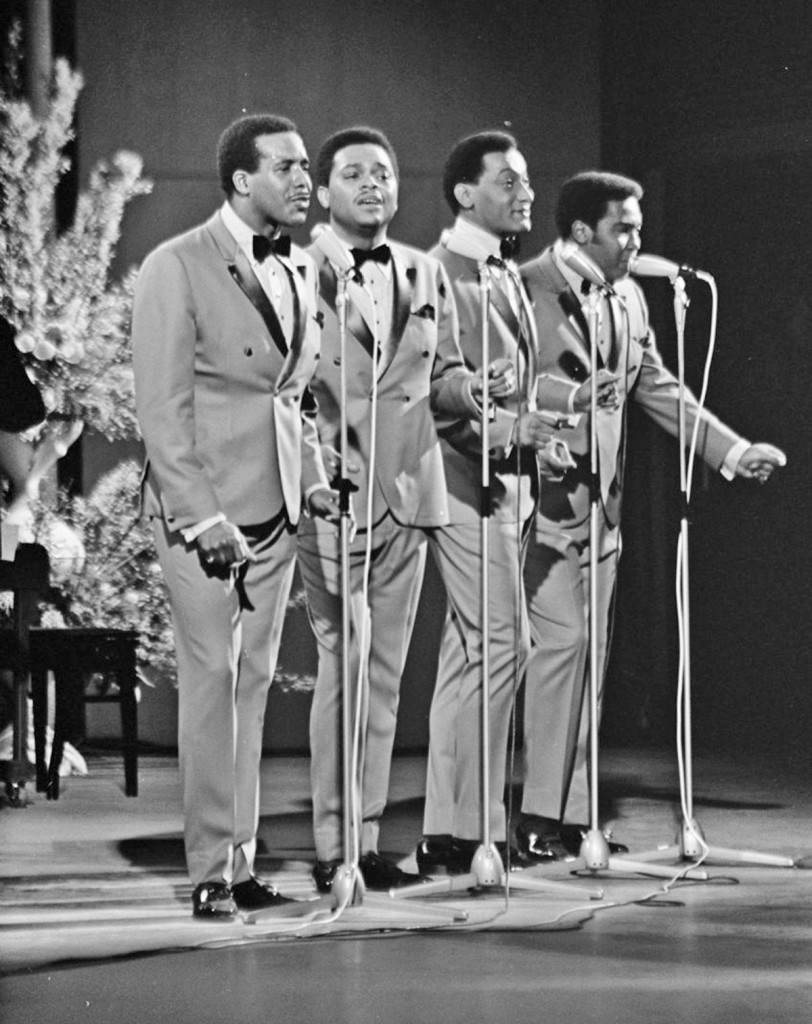
This quartet from Detroit performed for 40-plus years without a single change in personnel—and charted hits at every stage of their lengthy career. Although they’re best remembered for the records they made at Motown in the 60s, the Tops also had substantial success at labels like ABC, Casablanca, and Arista in subsequent decades. The Four Tops consisted of lead singer Levi Stubbs, first tenor Abdul “Duke” Fakir, second tenor Lawrence Payton, and baritone Renaldo “Obie” Benson. Among the classics recorded by the Four Tops at Motown: “Baby I Need Your Loving,” “I Can’t Help Myself,” “It’s the Same Old Song,” “Reach Out I’ll Be There,” “Standing in the Shadows of Love,” “Bernadette.” Between 1964 and 1988, the Four Tops made Billboard’s Hot 100 chart 45 times and its R&B chart 52 times.
The Supremes
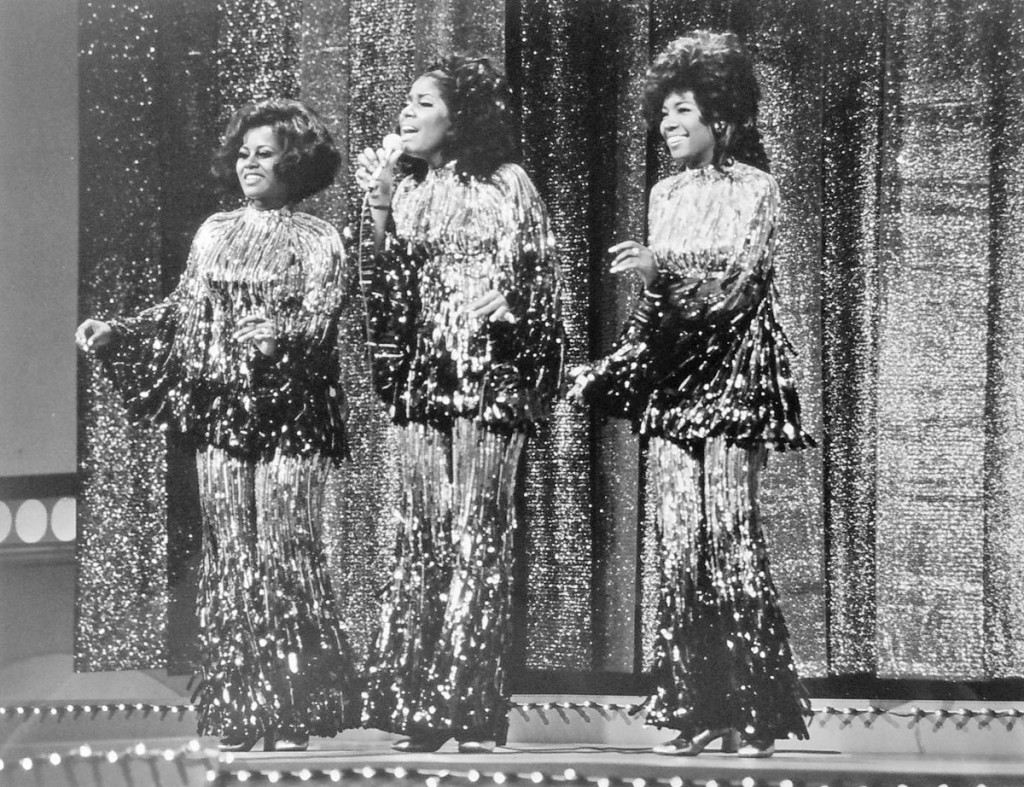
The Supremes rose from the poverty of Detroit’s Brewster housing project to become Motown’s most consistent hit-makers and one of the most popular female groups of the 60s—and perhaps of all time. They sang in a polished style that bridged the worlds of pop and soul, as they put together an astounding run of number-one hits in the mid-60s. In June 1965, the Supremes set a record for the most consecutive number-one hits by an American group when “Back in My Arms Again” rose to the top of the Billboard singles chart. Other hits in that streak: “Where Did Our Love Go,” “Baby Love,” “Come See About Me,” “Stop! In the Name of Love.” This milestone is all the more impressive because it occurred at the height of the British Invasion, a period when groups from abroad otherwise ruled the charts. The Supremes—Diana Ross, Florence Ballard and Mary Wilson—dominated the charts with hits like “I Hear a Symphony,” “You Can’t Hurry Love,” “You Keep Me Hangin’ On,” “Love Is Here and Now You’re Gone,” “The Happening,” “Love Child,” and “Someday We’ll Be Together.” In the early 80s, the group’s rags-to-riches life story was turned into a successful Broadway musical, “Dreamgirls.”
Parliament–Funkadelic
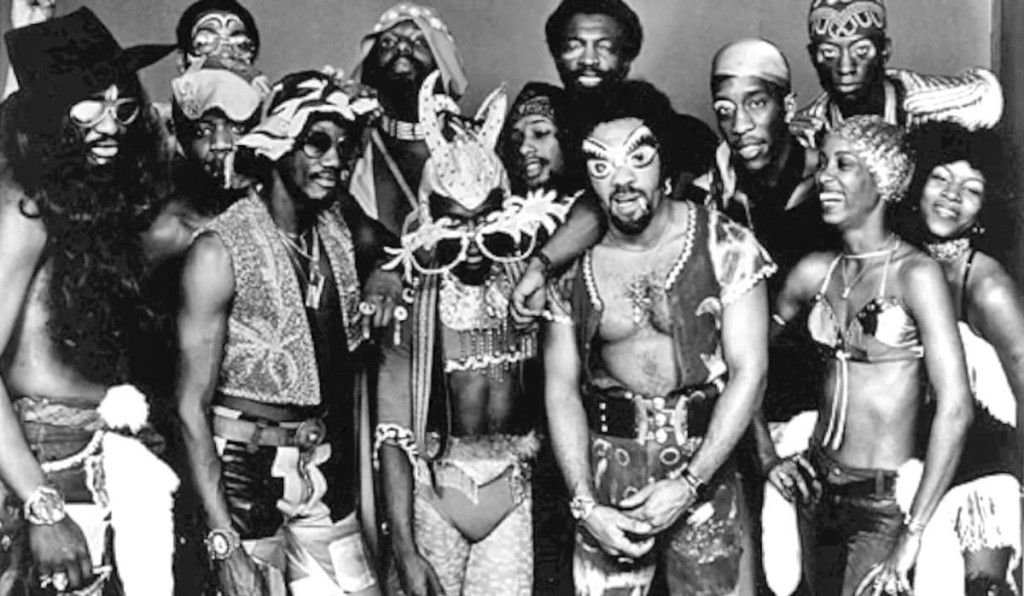
Conflict between opposing forces of good, the trippy funkateer Starchild, and evil, the uptight Sir Nose D’Void of Funk. The Mothership Connection. The Brides of Funkenstein. Atomic Dog. Driven by singer, songwriter, and producer George Clinton’s conceptually inventive mind and the band’s tight ensemble playing and stretched-out jamming, Parliament–Funkadelic tackled everything from rap and hip-hop to techno and alternative. Over the decades, Clinton has presided over a musical empire that included Parliament and Funkadelic — which are two separate groups — and numerous offshoots (the Brides of Funkenstein, Parlet, and others). Between them, Parliament and Funkadelic had a distinct identity and alternated releases into the late 70s, with Clinton dividing his time between them. Parliament was essentially a horn-based soul group; Funkadelic, a guitar-based rock group. Both were built on a foundation of funk led by an entourage that referred to themselves as “dealers of funky music, P-Funk, uncut funk, The Bomb.” The P-Funk All-Stars still tour today, and Clinton is second only to James Brown as the most heavily sampled artist.
Boyz II Men

This is only group on our list not in the Rock and Roll Hall of Fame—but it’s only a matter of time before they will be inducted. Boyz II Men is the best-selling R&B group ever, with 60 million albums sold … and counting. The group redefined popular R&B, penning and performing some of the most celebrated classics of the past two decades and earning a slew of accolades: four Grammy Awards, nine American Music Awards, nine Soul Train Awards, three Billboard Awards. Past hits include “End of the Road,” “I’ll Make Love to You,” “One Sweet Day,” and “Motownphilly.” Wanya Morris, Shawn Stockman, Nathan Morris, and Michael McCary, who later left the group due to problems with scoliosis, made history with a smooth Babyface ballad—“End of the Road”—for the soundtrack of Eddie Murphy’s “Boomerang.” Released as a single, the song became not just a blockbuster but one of the biggest hits in history, spending 13 weeks at number one on the pop charts—an incredible run that broke the record of 11 weeks, held by Elvis Presley since 1956 with the double-sided single of “Don’t Be Cruel” and “Hound Dog.”
The Staple Singers
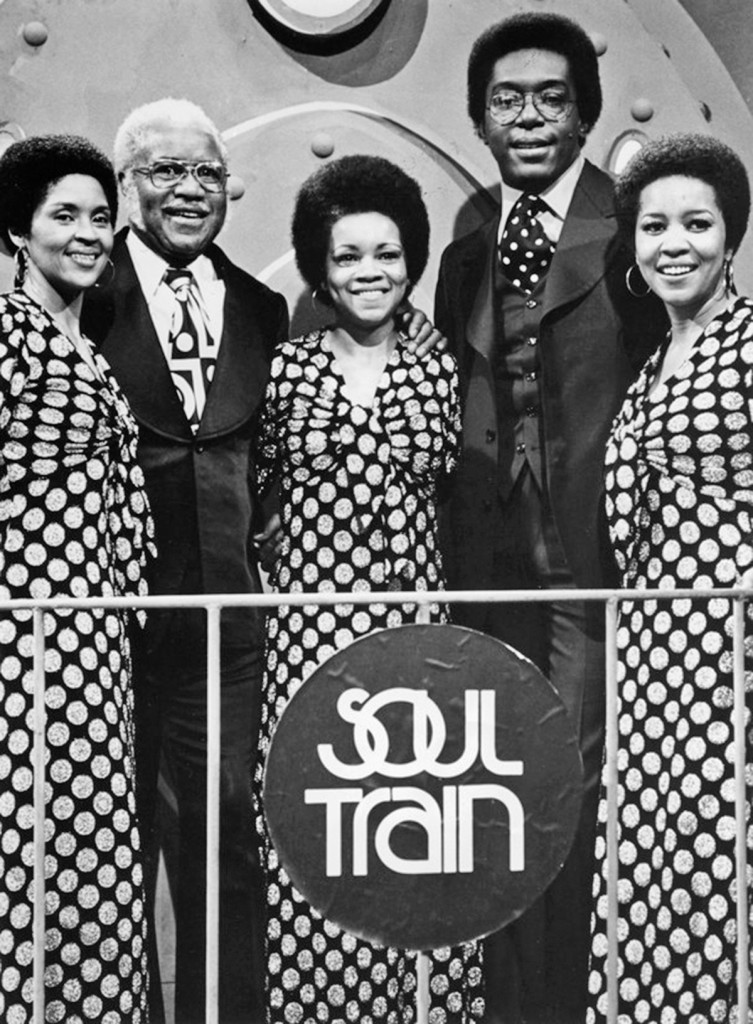
One of the greatest R&B groups or one of the greatest gospel groups? We say both. There has to be a place on our list for a group some call “God’s greatest hit-makers.” In regards to their crossover from pure gospel to folk and soul-flavored material—a source of controversy within the religious community—patriarch Roebuck “Pops” Staples told Essence magazine: “We’ve always tried to make affirmative, happy music that makes a positive point. Our aim is to get across a message while we’re entertaining people.” Steeped in the music of the black church, the Staple Singers were able to cross into the pop mainstream without selling out their gospel roots. The clan’s musical signatures have been Pops Staples’ gospel-based songwriting and bluesy guitar; Mavis Staples’ rich, raspy vocals; and the supple, ringing harmonies of Cleotha and Yvonne Staples. The Staples cracked the top 40 eight times from 1971 to 1975. Two singles reached number one, including the funky, inspirational “I’ll Take You There,” which was the highlight of their tenure on Stax Records.
Gladys Knight and the Pips
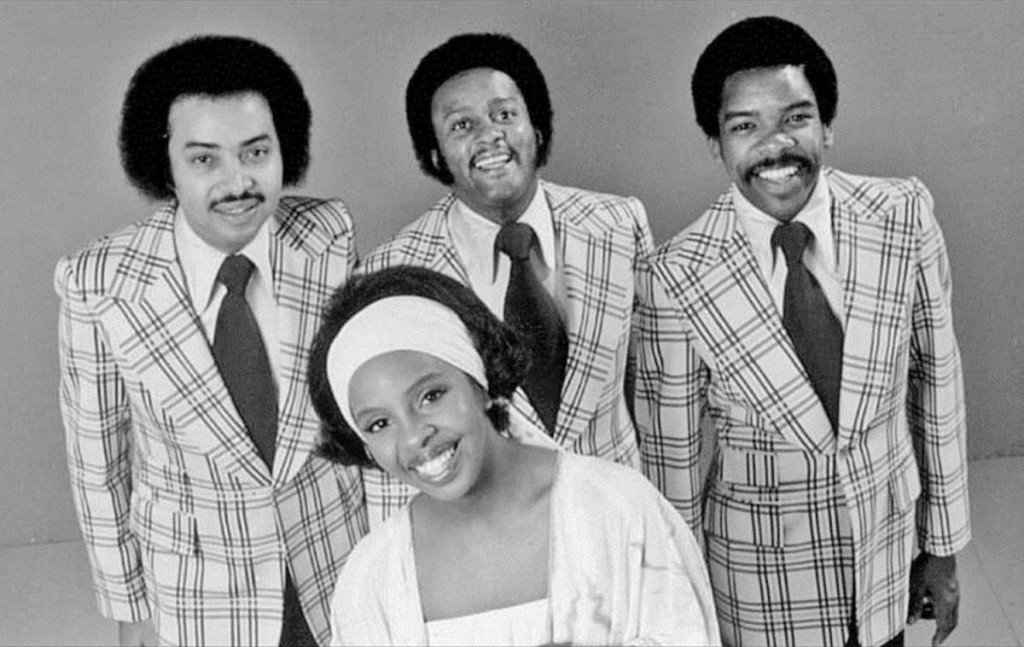
One of the most respected and longest-lived soul groups, this group has hits that span four decades. Gladys Knight and the Pips—Gladys’s brother, Merald “Bubba” Knight, and cousins Edward Patten and William Guest—signed with Motown’s Soul Records label in 1966. At Motown, the group quickly ascended the charts with their version of “I Heard It Through the Grapevine” (R&B, number one; pop, number two), “Friendship Train” (R&B, number two; pop, number 17), “If I Were Your Woman” (R&B, number one; pop, number 9), and “I Don’t Want to Do Wrong” (R&B, number one; pop, number 17). They exited Motown on a high note with “Neither One of Us (Wants to Be the First to Say Goodbye)” and “Daddy Could Swear, I Declare.” In 1973, the group moved Buddah Records, where they had their biggest hit, “Midnight Train to Georgia”—a number-one hit for two weeks on the pop chart and four weeks on the R&B chart. Little known fact: Songwriter Jim Weatherly had originally entitled this piece of sultry Southern soul “Midnight Plane to Houston.”
Booker T. and the M.G.’s
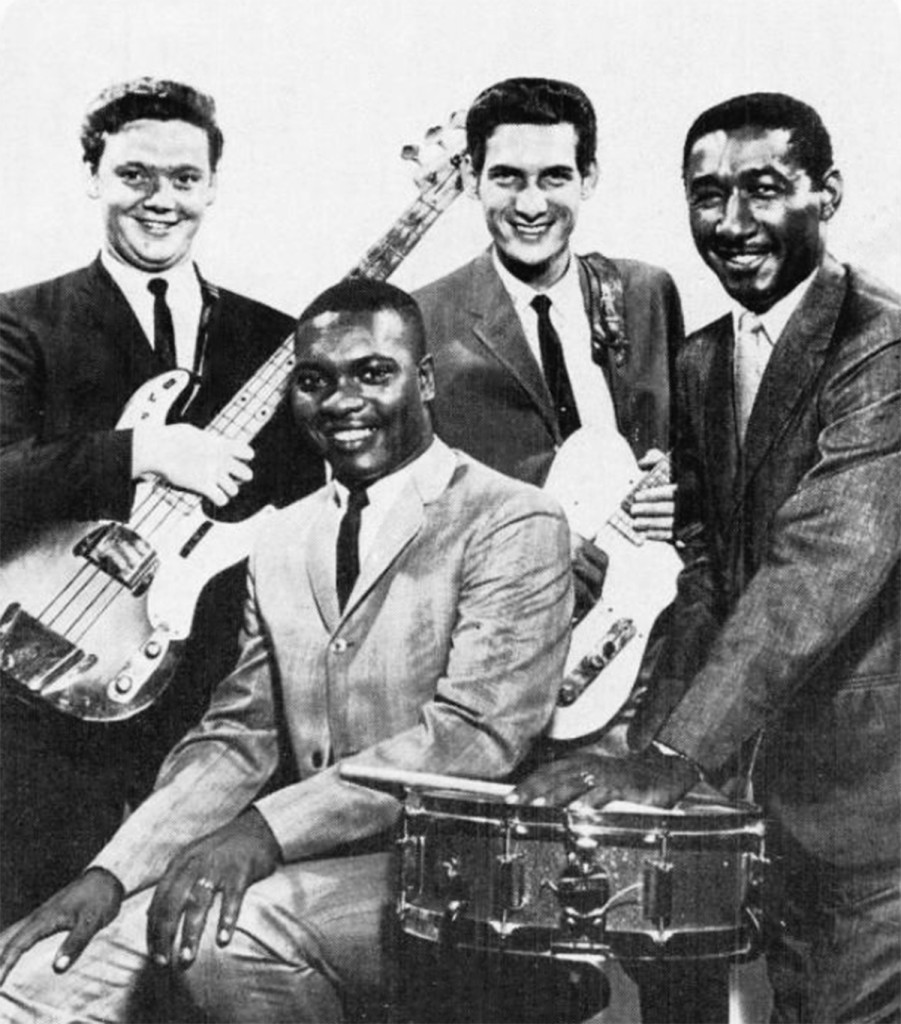
One of the most versatile groups in music history. As the house band for the Stax/Volt labels between 1963 and 1968, Booker T. and the MGs appeared on more than 600 Stax/Volt recordings, including classics by such artists as Otis Redding, Eddie Floyd, Rufus Thomas, Carla Thomas, Johnnie Taylor, and William Bell. As a result of Stax’s affiliation with Atlantic Records, the group also worked with Wilson Pickett, Sam and Dave, and Albert King. If that wasn’t enough work, the group on its own cut 10 albums and 14 instrumental hits, including “Green Onions,” “Hang ‘Em High,” “Time Is Tight,” and “Soul-Limbo.” The group came together in the early 60s at Stax Records and was led by organist Booker T. Jones. It wasn’t until 1963 that the definitive version of Booker T. and the MGs (which stood for “Memphis Group”) was complete. Particularly successful was the group’s relationship with Stax’s biggest star, Otis Redding. In addition to playing on virtually all of his records, the band backed him at his legendary performance at the Monterey Pop Festival in 1967.
Sources: Rockhall.com; AllMusic.com; en.wikipedia.org.




